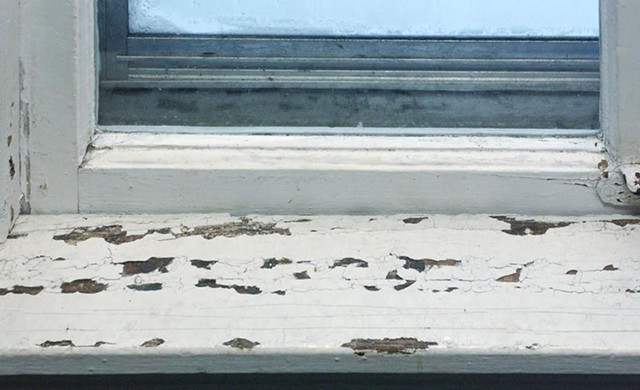
- PHOTO FROM ENVIRONMENTAL PROTECTION AGENCY
- Deteriorating paint in older homes represents most of the risk of lead poisoning for young children in Monroe County.
Researchers from the University of Rochester, the Silent Spring Institute, and the Center for Healthy Housing will now study whether the lead hazard control program and some related initiatives also reduce children’s exposure to other potentially harmful chemicals and allergens.

- IMAGE PROVIDED / PHOTO BY STEVE MCCAW
- Katrina Korfmacher, community engagement director of UR’s Environmental Health Sciences Center, said it makes sense to think about home hazards holistically.
The three-year study will be funded by a $927,000 U.S. Department of Housing and Urban Development grant. The city is partnering with the researchers, who will conduct the study across 100 owner-occupied homes in the lead hazard control program.
The study ultimately comes down to dust. City inspectors use dust samples to test for the presence of lead paint in houses and apartments built prior to 1978. Microscopic dust from the paint is the biggest cause of lead paint-related poisoning in children, according to the Coalition to Prevent Lead Poisoning.
Korfmacher, who’s been deeply involved with community-wide lead poisoning prevention programs, explained that researchers will also use dust samples to test for substances including pesticides associated with rodent or cockroach extermination, allergens that can exacerbate asthma, and pthalates, a group of chemicals found in plastics that can interfere with hormones and have been linked to developmental and reproductive disorders.

- PHOTO PROVIDED
- Robin Dodson, a research scientist at the Silent Spring Institute and the lead investigator in a study to determine whether other home hazards are addressed when homeowners repair their properties to address the presence of lead paint.
“Household dust is like a great reservoir for a lot of these chemicals,” said Robin Dodson, a research scientist at the Silent Spring Institute and the lead investigator in the study. Silent Spring Institute was founded to study how chemicals present in everyday environments affect women’s health, with a focus on breast cancer prevention.
Many of these chemicals aren’t volatile and they settle, which is how they end up in household dust, Dodson explained.
Ultimately, the researchers are looking for an answer to a question: When homeowners make improvements to address the presence of lead paint, do they unwittingly make a whole other range of health improvements? Similarly, they want to know if there is a possibility that the work unintentionally introduces other chemical hazards.
They also want to develop outreach programs to educate residents about how to maintain a healthy home and use safer products for things such as cleaning and pest control. That work will be based around the state’s Healthy Neighborhoods program, which operates through counties and provides assessments, guidance, and educational materials on several topics, including maintaining healthy homes for people with asthma, preventing or reducing household pests, and preventing carbon monoxide poisoning.
The city of Rochester has over the past 15 years received roughly $35 million in federal Department of Housing and Urban Development grants for its lead hazard control program. Each year the department spends millions on lead poisoning prevention grants to communities across the U.S. and there’s an opportunity to leverage that money to address other environmental hazards within homes, Dodson said.
“One way of looking at it is HUD is making this investment in making homes lead safe and can we exponentially increase the impact of those on health,” Korfmacher said.
Jeremy Moule is CITY’s news editor. He can be reached at [email protected].
